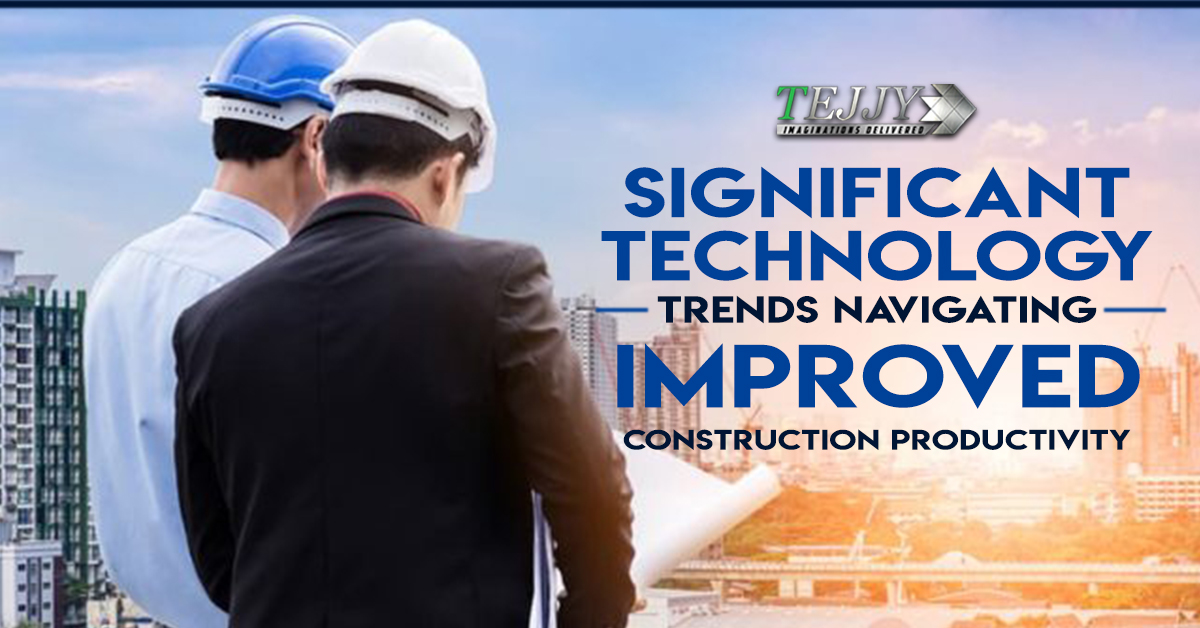Are you learning for the technology trends that can improve the productivity of your construction? Here are a dozen of the construction management for navigating your projects, bringing the most fruitful result.
- Predictive Analytics:
Predictive analytics are making risk management easier. The technology helps to analyze data from contractors, material suppliers, designers, and the construction site to weigh up risk factors based on previous records. This provides dashboards where General Contractors can detect the project elements at the highest risk and allow them to drill down to perceive the risk assessment.
- Construction Software & Data Ecosystem:
Real-time collaboration is considered to be a vital constituent of the entire building process. Its impact on the construction sector is expected to increase considerably. The data ecosystem has truly played an essential role in bringing a paradigm shift to construction.
- Self-Healing Concrete:
Self-healing concrete is being used on roads, buildings, and homes. Since concrete is the extensively produced & consumed material in the construction industry, it’ll be using about 5 billion metric tons every year. Presently, the United States constitutes to be 8% of the entire global emissions in this area.
- Advance Uses of GPS
GPS tracking solutions have facilitated surveying to improve dramatically as crews are no longer using traditional surveying equipment.Project managers are using GPS in fleet management. The vehicle is fortified with a device through computers and smartphones to let everyone know about the exact location of the vehicles.
- Scanning Solutions:
Scanning is making cost-effective solutions over the past years, which facilitated the construction industry to completely understand the stages of the projects.
- Timber Constructions:
Sustainability & environmental advantages are increasing in timber buildings, which have an excellent benefit to the well-being of people. It contributes to health & happiness. Staying inside a timber building helps people to work better and become collaborative.
- Wearable Technology:
Wearable technologies like Google Glass and armbands help to communicate with coaches and have become useful in keeping the workers safe. It also helps to track the workers in case of an accident. The devices are more predominant with Job site connectivity and data aggregation.
- Smart Building:
Smarter buildings associate with improved lighting control, energy efficiency, and apt air-conditioning control. High-performance glazing can also be used for not introducing solar load inside the building.
- Modular Construction & 3D Printed Dwellings:
Modular construction is on the rise. The technology is a vital facet of construction management & building design. It is a kind of rack-service system used for installing & fabricating services for improved coordination. Revit & Inventor are modularization software for duct work, plumbing & electrical equipment module creation to enable a streamlined construction management workflow.
- Smart Buildings
Several IoT (internet of things) devices are designed specifically for homes for making them smarter & friendlier. Voice assistants help to play music, ask questions, and control lights in your home. Being a form of Artificial Intelligence, the devices will continue to self-improve and connect to more devices at home.
- Connected Homes:
Like computers associated with the set-up to form the internet, solar-powered homes will constitute an interrelated cell-powered system, thus creating & managing power and energy efficiency. Builders should use Information Technology and networking engineers for designing and establishing the infrastructure for the technology to empower smart homes and cities.
- Home Analytics:
A website has analytics set up for measuring & monitoring traffic as well as user behavior. Similarly, AEC professionals will be happy to find out more applications of analytics in residential & commercial buildings. The new applications can help in providing real-time insights into the quantity of traffic & behavior of visitors, permitting the smart building for adjusting to the features. This involves turning off lights where none is present, temperature adjustment, closing shutters for the facades facing the sun, or opening ways for the car park exits when everyone is leaving the office for home.
The data-driven construction sector will focus more on collaboration & real-time communication. The construction management project stakeholders can expect improved productivity rates and fewer project delays with the use of technology. The construction industry is going through a significant paradigm shift and will expect significant trends in the coming years. For more information about construction technology trends, consult the BIM experts of Tejjy Inc. at 202-465-4830 or [email protected].
